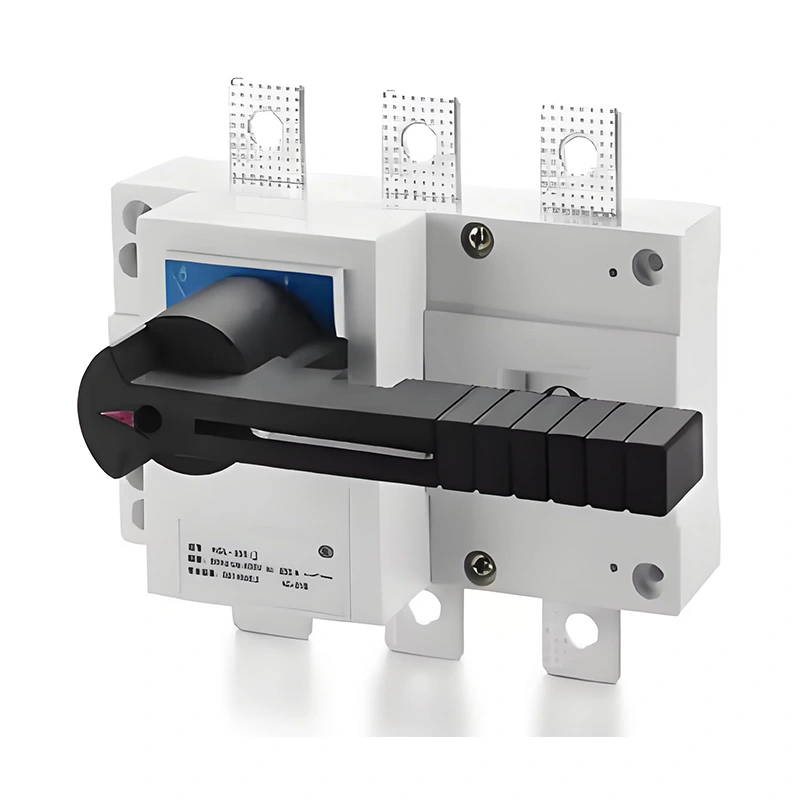Load Isolation Switch: Ensuring Safety and Efficiency in Electrical Systems
2025-04-01
In today's industrial and residential environments, safety and efficiency are paramount when it comes to electrical systems. One critical component that helps ensure both is the load isolation switch. This electrical device plays a vital role in isolating parts of a system for maintenance or repairs, preventing damage, and protecting personnel from electrical hazards.
Whether in factories, power plants, or even residential installations, understanding the importance of load isolation switches can help individuals and organizations maintain a safe, efficient, and reliable electrical setup. In this blog, we’ll dive into what a load isolation switch is, how it works, its applications, and why it’s essential for your electrical infrastructure.
What is a Load Isolation Switch?
A load isolation switch is a type of electrical switch designed to disconnect an electrical load from its power source. It is often used to isolate specific circuits or devices to ensure the safe operation, maintenance, or repair of electrical systems. These switches allow users to safely cut off power without interrupting the entire system, minimizing downtime while protecting both the equipment and personnel.
The key purpose of a load isolation switch is to ensure that electrical energy is safely removed from a particular section of a circuit before any maintenance or modifications are made. It prevents electrical accidents and allows workers to perform tasks without risk of electrical shock, short circuits, or equipment damage.
How Does a Load Isolation Switch Work?
The operation of a load isolation switch is straightforward yet highly effective. When the switch is activated, it disconnects the load from its power source. This is often achieved by opening or closing contacts within the switch mechanism, either physically or electrically, ensuring that no power is being supplied to the load.
In some instances, load isolation switches come with additional features, such as the ability to handle high-voltage systems or provide visual indicators of whether the system is live or isolated. These features enhance user safety, ensuring that the system is not accidentally energized during maintenance.
Types of Load Isolation Switches:
- Manual Isolation Switches: These switches require manual operation to disconnect the load from the electrical supply. They are simple in design and commonly found in residential and light commercial settings.
- Motorized Isolation Switches: In industrial settings, motorized load isolation switches may be used. These are controlled electronically or remotely, allowing users to isolate circuits from a distance, increasing safety and convenience.
- Rotary Isolation Switches: Typically used in high-voltage applications, these switches are operated by rotating a knob or lever to disconnect or isolate power.
Applications of Load Isolation Switches
Load isolation switches are found in a wide range of applications, making them versatile and indispensable in both industrial and residential settings. Some common applications include:
1. Industrial Electrical Systems
In industrial environments, load isolation switches are used to safely isolate equipment and machinery for maintenance. This prevents any inadvertent electrical faults during servicing, such as short circuits or damage to sensitive equipment.
2. Residential and Commercial Electrical Panels
In homes and businesses, load isolation switches are used to disconnect power to specific appliances or circuits. For instance, an electrician might isolate a part of the system to work on a malfunctioning appliance without turning off the entire electrical panel.
3. Renewable Energy Systems
In solar power installations, load isolation switches are used to disconnect the solar panels or inverters for maintenance or troubleshooting. This ensures that maintenance workers can perform their tasks safely while the rest of the system continues to operate.
4. Power Distribution Networks
In large power distribution networks, load isolation switches are crucial for safely isolating sections of the network during faults or scheduled maintenance. This allows for quick restoration of service to other parts of the network, minimizing the impact of outages.
Benefits of Load Isolation Switches
The use of load isolation switches provides several critical benefits that improve the overall safety, reliability, and efficiency of electrical systems. Here are some of the most significant advantages:
1. Enhanced Safety
The primary benefit of a load isolation switch is the safety it provides. By disconnecting the power from a section of the system, these switches protect workers from potential electrical shock or electrocution while they are servicing equipment or circuits.
2. Improved Equipment Protection
By isolating certain parts of a system, load isolation switches can help prevent overloading, overheating, and short-circuiting, which could otherwise damage valuable electrical equipment. This extends the lifespan of machinery and components, ultimately saving on costly repairs or replacements.
3. Reduced Downtime
When performing maintenance on an electrical system, a load isolation switch allows for targeted disconnection of specific loads, reducing downtime. This allows other parts of the system to continue functioning while repairs are being made, ensuring minimal disruption to operations.
4. Compliance with Regulations
In many countries, electrical safety regulations require that systems be properly isolated before maintenance work is carried out. Load isolation switches are often a critical component in meeting these regulations, ensuring that electrical work complies with local safety standards.
5. Convenient Operation
With manual or automated models available, load isolation switches offer easy operation. They are designed for quick and efficient use, making them ideal for both routine maintenance and emergency scenarios.
Why is a Load Isolation Switch Essential for Electrical Safety?
In the world of electrical systems, ensuring safety is non-negotiable. Electrical faults, malfunctions, or accidental disconnections can result in disastrous consequences, including fires, injuries, or fatalities. A load isolation switch minimizes these risks by allowing operators and maintenance personnel to safely work on live equipment.
Without proper isolation, electricity can continue to flow through parts of a system that are being worked on, increasing the likelihood of accidents. Load isolation switches act as the first line of defense against such hazards, ensuring that only the intended portions of a system are active while the rest remain safely de-energized.
Conclusion
The load isolation switch is an essential safety feature in modern electrical systems, offering a practical solution for isolating parts of the system during maintenance or repair. Whether in residential, commercial, or industrial settings, these switches help prevent electrical accidents, protect valuable equipment, and ensure the safety of workers.
As electrical systems become more complex, the importance of proper isolation cannot be overstated. By incorporating load isolation switches into your electrical infrastructure, you can ensure a safer and more efficient environment, whether you're dealing with routine maintenance or responding to emergencies. Always prioritize safety and make sure that the appropriate isolation mechanisms are in place to keep your electrical systems running smoothly.



